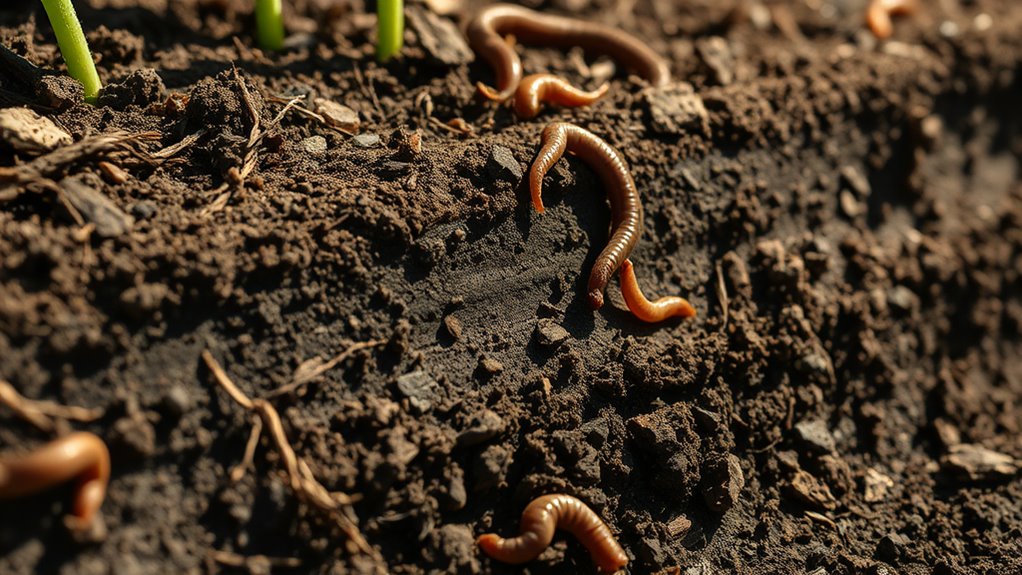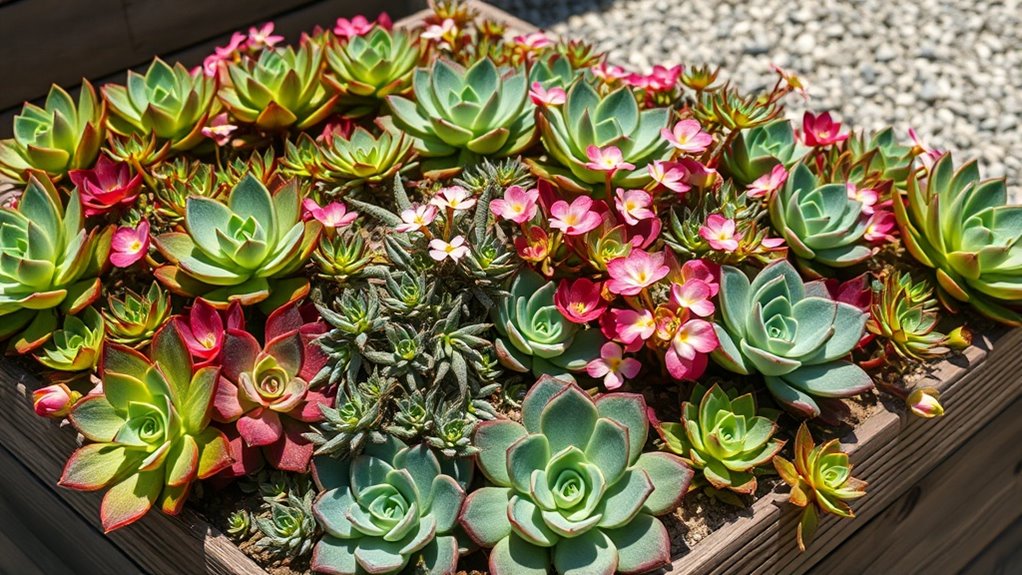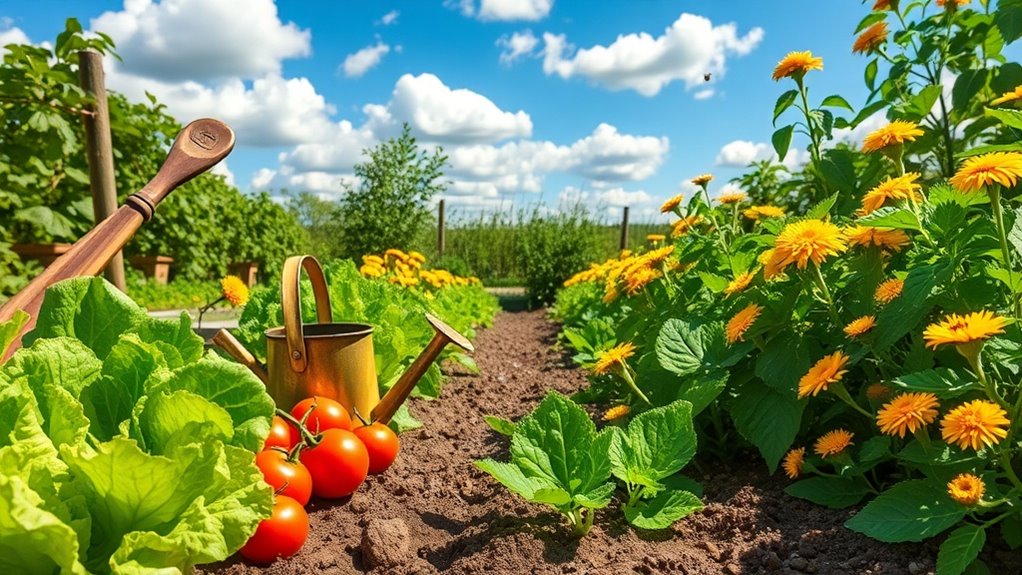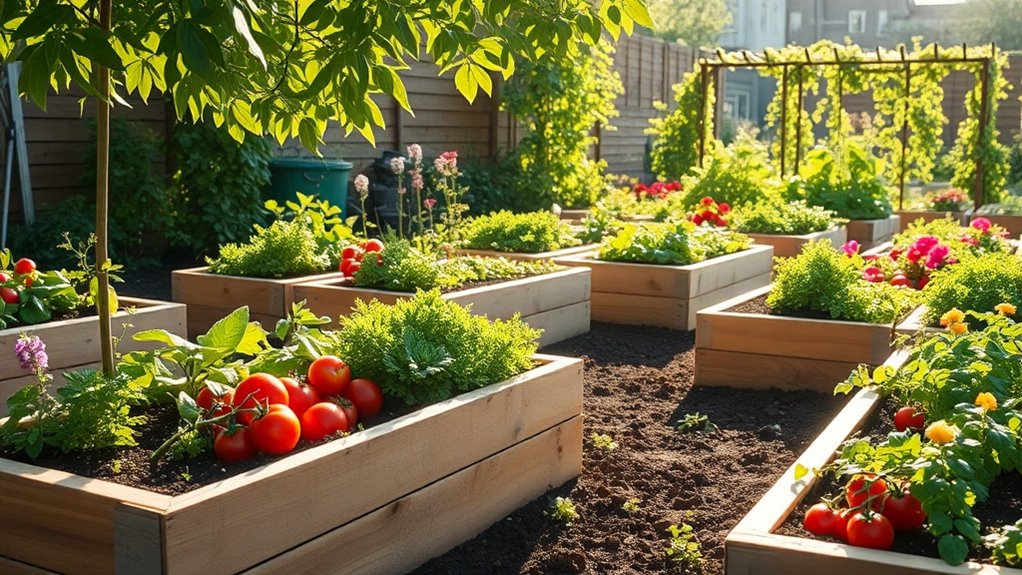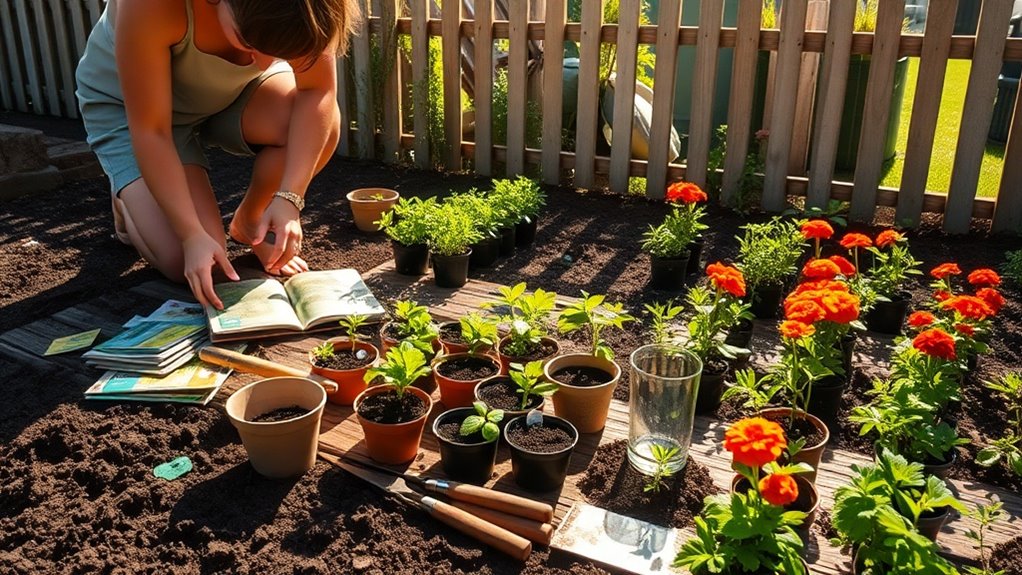5 Common Soil Myths You Need to Stop Believing
You’ve probably thought all soils are the same, but they’re not—they vary in texture, pH, and nutrients, affecting plant growth. More fertilizer doesn’t mean better soil; it causes toxicity and pollution. Soil pH does impact nutrient uptake for your plants. Overwatering leads to waterlogged conditions and compacted structure. And soil isn’t just dirt; it’s full of microbes that boost fertility. These insights will help you optimize your garden’s health.
Key Takeaways
- Soils vary in texture, pH, and nutrients, affecting plant growth and water retention differently.
- Over-fertilizing can cause nutrient imbalances, soil toxicity, and environmental pollution.
- Soil pH directly impacts nutrient availability and is crucial for optimal plant health.
- Overwatering creates waterlogged conditions that harm soil structure and root systems.
- Soil is a living ecosystem with microbes and organisms that improve fertility and prevent erosion.
Myth 1: All Soils Are the Same
One common myth is that all soils are identical, but they’re not. You might assume every patch of earth behaves the same, yet soil facts show vast differences in composition and properties.
For instance, soils vary by texture—sandy types drain quickly, while clayey ones retain water longer—affecting plant growth directly. They’re also distinguished by pH and nutrient profiles, which determine fertility and microbial activity.
Embracing this understanding can lead to better gardening outcomes.
Myth 2: More Fertilizer Always Means Better Soil
While you might assume that more fertilizer boosts soil fertility, it’s not that simple. Overapplication disrupts nutrient balance, leading to toxicity where excess salts harm plant roots and microbial life.
Fertilizer runoff causes environmental issues like water pollution, while it fails to address underlying soil deficiencies. You must conduct soil tests to determine precise nutrient needs, as balanced applications promote healthier growth without wasting resources or degrading soil structure. Therefore, engaging in soil testing is essential for identifying and remedying issues that could be causing your garden to fail. Additionally, soil testing can increase crop yields by optimizing nutrient availability for plants.
Myth 3: Soil Ph Doesn’t Affect Plant Growth
Many people assume soil pH doesn’t influence plant growth, but it plays a key role in nutrient uptake. You need to understand that plants absorb nutrients effectively only within specific pH ranges, impacting their health and yield, and by incorporating backyard solutions like compost from kitchen scraps, you can naturally adjust soil pH for better results. For instance, acidic soils enhance certain elements, while alkaline ones limit others.
| pH Range | Suitable Plants | Key Effects on Nutrients |
|---|---|---|
| 4.0-5.0 | Blueberries, azaleas | High aluminum, low phosphorus |
| 5.1-6.0 | Potatoes, carrots | Improved iron and manganese |
| 6.1-7.0 | Tomatoes, beans | Optimal for nitrogen and potassium |
| 7.1-8.0 | Grasses, asparagus | Reduced zinc and boron |
| >8.0 | Alkaline-tolerant species | Limited micronutrients like iron |
To further enhance your harvest naturally, incorporate natural soil preparation techniques that promote healthier plants and increased yield without relying on fertilizers. Test your soil’s pH regularly and amend it to boost your plants’ growth.
Myth 4: Overwatering Has No Negative Effects on Soil
Overwatering severely impacts soil health, debunking the myth that it’s harmless. You might think extra water nourishes soil, but it causes waterlogging, reducing oxygen levels essential for root function. By employing expert watering techniques, you can avoid these issues and ensure your garden thrives.
This leads to anaerobic conditions that produce toxic byproducts and accelerate nutrient leaching, washing away vital elements like nitrogen and potassium.
Overwatering also compacts soil particles, decreasing porosity and impairing water infiltration. Consequently, you degrade soil structure and fertility, resulting in reduced plant support and increased erosion risk.
Monitor your soil’s moisture carefully to prevent these detrimental effects.
To further protect your plants, always watch for the signs of overwatering that indicate potential issues early on.
Myth 5: Soil Is Just Inert Dirt With No Living Organisms
Although you might assume soil is merely inert dirt lacking living organisms, it’s actually a thriving ecosystem brimming with billions of bacteria, fungi, and invertebrates that drive nutrient cycling and soil health.
These microbes decompose organic matter, fixing nitrogen and suppressing pathogens to enhance fertility. You rely on earthworms to aerate soil, improving water retention and root penetration.
Recognizing this biodiversity helps you avoid practices like over-tilling, which disrupts microbial communities and leads to erosion.
In addition, applying mulch can foster a healthier soil environment by retaining moisture and supporting beneficial microbial activity.
Additionally, incorporating organic composting with kitchen scraps and garden waste can further enrich this ecosystem by adding essential nutrients and promoting microbial diversity.

